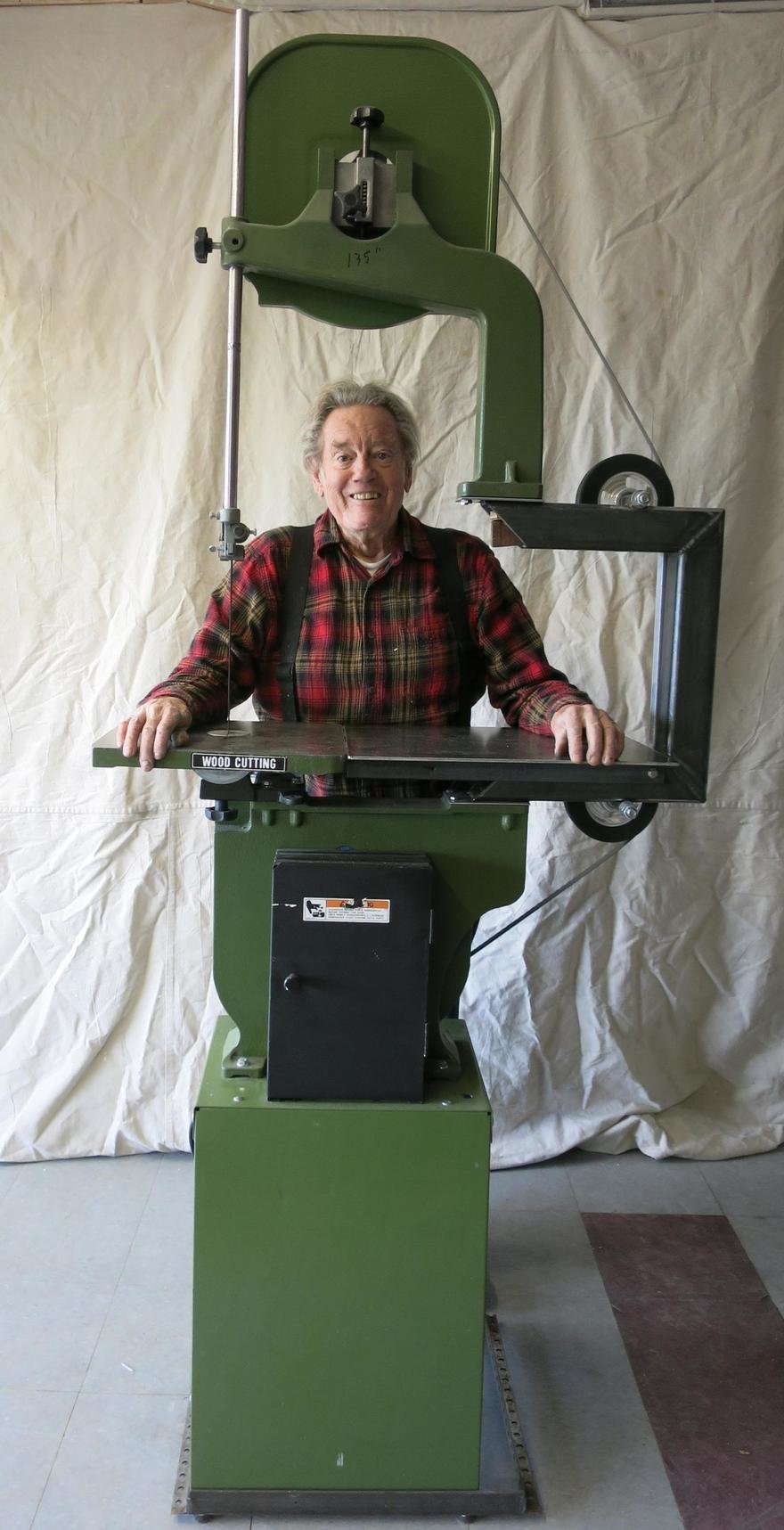
Man Hacks a Bandsaw to Rip 4x8 Sheets in Half!
24" width capacity through some crazy blade shenanigans
Most of you who use bandsaws know you can always increase the height capacity by adding a riser block. But a fellow named Ron Sutton over at the Homemade Tools forum wanted more width.
"I've converted a 14 inch bandsaw to 28 inches," Sutton writes, "so that I can now cut a 4x8 in half, that is, rip it down the middle."
 Enter a caption (optional)
Enter a caption (optional) Enter a caption (optional)
Enter a caption (optional) Enter a caption (optional)
Enter a caption (optional) Enter a caption (optional)
Enter a caption (optional) Enter a caption (optional)
Enter a caption (optional) Enter a caption (optional)
Enter a caption (optional)I have no idea if it's advisable to have a bandsaw blade bending both ways like that, and a reader of Sutton's post wrote the following query: "That is very clever Ron. I like how you placed the rollers. Do you find any problems with vibration, alignment or flex?"
Sutton never responded--I hope nothing's happened to the guy!
-
o1Favorite This
-
Q6Comment
K
{Welcome
Create a Core77 Account
Already have an account? Sign In
By creating a Core77 account you confirm that you accept the Terms of Use
K
Reset Password
Please enter your email and we will send an email to reset your password.


Comments
Not very practical. You can get a much cleaner, straighter rip cut with a straight-edge and a circular saw. (Read on if you want to hear a better idea than wasting money on a track saw.)
But it would be a different story if you wanted to cut curves into that piece of sheet goods.
Does kind of seem like it would vibrate a lot, though. Bob up and down like a sewing machine most likely.
Here's my suggestion for cutting up sheet goods if you don't have a table saw (or the huge amount of floorspace it takes to use one.)
Go to the metal store - the one where welders go to buy their materials. Buy a 20' section of aluminum 1/4"x2" bar stock. Have them cut it to the following lengths:
9'
5'
3'
2'
And the "drop" will be around 11"
These give you some very rugged straightedges for many different uses. The 9' or 5' size can be clamped with spring clamps right on to your sheet goods with enough overhang to guide the saw into and out of the cut. The other sizes are handy for cutting up the pieces. All sizes are handy for checking floors and walls for flatness, drawing and/or scoring straight lines, screeding small jobs (they clean up nicely). I've put masking tape on one side when cutting pre-finished materials. I've used them for guiding a wet saw when cutting granite or slate.
If you drill a hole in the end of each piece, they will hang on a 16d finish nail in any out of the way place that's a couple of inches wide. Cost is minimal and value is high.
Now you can cut up sheet goods resting on sawhorses (and usually something additional to keep from sagging.) No need for 200s.f. of space around your table saw.
If you use a high quality circular saw (my older Porter Cables are good, as is the Skill Sidewinder - don't buy online so you can check blade runout before you buy) and measure accurately you can get as clean a cut as with a table saw and accuracy is as good as the care you take. This system is at least as accurate as a track saw, more versatile, and only slightly more time-consuming to use. My PC saws both have a precisely 5" offset with a narrow kerf blade on. That's pretty handy, but maybe the other manufacturers do the same.
I just rip sheets on my table saw, especially since I have an off-feed table.
I usually just rip sheets on my table saw, especially since I have an off-feed table.
or you could just use a Festool track saw?
The type of guy who engineers and modifies his exisiting tools to fit a need is exactly the type of guy who would not drop 900$ on a track saw
True. Much respect to the maker. In the end most people would spend much more on this mod than the track saw. Seems like you could rip a 3ga sheet of steel with the right blade and lube. Can't do that with a track saw.